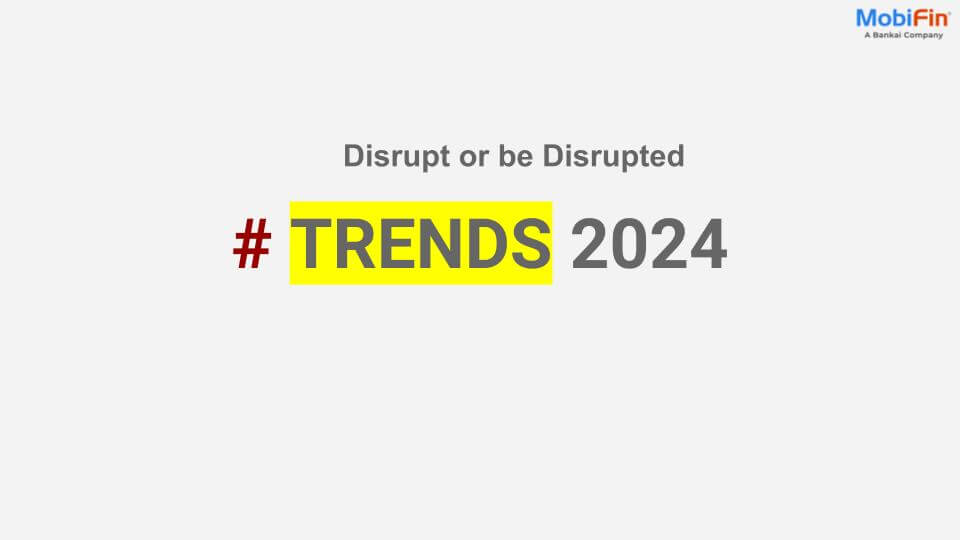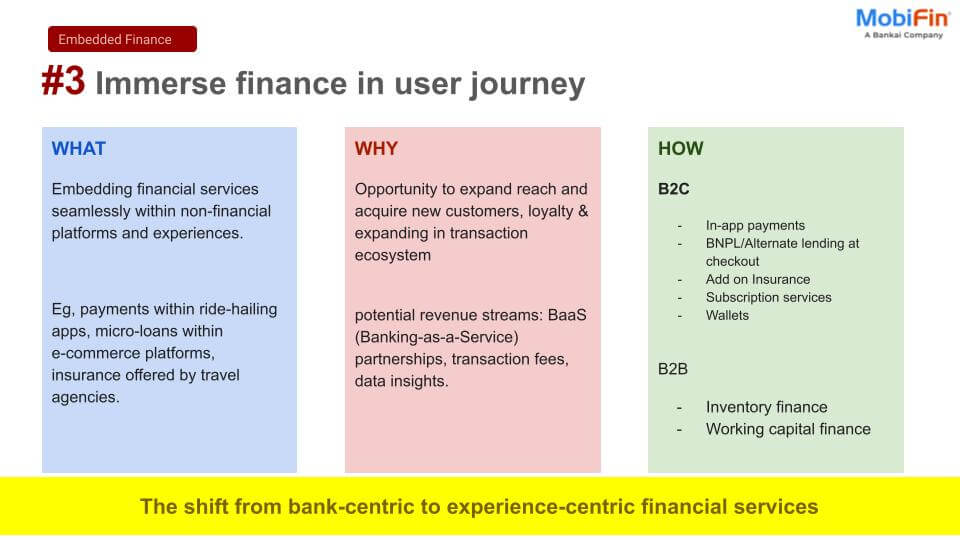Open finance APIs will make data sharing more efficient and atomize financial services into modular microservices. Embedded finance will not simply streamline digital purchases—it will redefine every company as a fintech, forcing a re-evaluation of core competencies.
As biometric security morphs from static checkpoints to continuous behavioral authentication, zero-trust architectures will default. As central bank digital currencies gain traction, programmable money will encode new possibilities and frictions into the economy’s base layer.
Collectively, these trends point to a future where financial functions are indistinguishable from the applications hosting them, where every action generates a financial microtransaction, and where money itself takes on new forms and velocities.
The fintech leaders of 2025 will be those who act on these shifts today, re-architecting their offerings around AI and blockchain primitives, exposing their services as developer-friendly APIs, embedding financial capabilities seamlessly into customer journeys, and solving for security and privacy by design. The laggards will find themselves disintermediated by the very technologies they underestimated.
For incumbents, 2025 is both an existential threat and a generational opportunity. It’s a call for innovators to reimagine financial services from first principles. Either way, the financial future is no longer a concept—it’s already here. Let’s dive in!
1. Artificial Intelligence and Machine Learning
AI applications in finance will surge to a staggering $26.67 billion market by 2025. Automated trading systems powered by AI will analyze vast market data in real time to execute optimal trades. Banks will leverage AI for pinpoint fraud detection, scanning millions of transactions to spot anomalies humans would miss.
AI-driven virtual assistants and chatbots will deliver instant, personalized financial advice. Behind the scenes, AI will transform credit scoring by factoring in alternative data for more accurate risk assessments. 75% of finance departments will implement AI by 2025, slashing costs and boosting efficiency.
2. Blockchain and Decentralized Finance (DeFi)
10% of global GDP will be stored on blockchains by 2027, which has immense implications. Decentralized exchanges like Uniswap and SushiSwap will enable peer-to-peer crypto trading without centralized control. As blockchain becomes faster and more scalable, DeFi will transition from niche to mainstream.
Blockchain will underpin new financial paradigms characterized by transparency, immutability, and disintermediation. To stay relevant, traditional finance will embrace elements of DeFi.
3. Open Banking and Open Finance
The boundaries of Open Banking will expand into all of Open Finance and Open Payments.
By 2026, Open Banking will facilitate $116 billion in payment transactions globally.
Consumers will have unprecedented control over their financial data. They’ll mix and match financial services from multiple providers in one seamless digital experience.
Banks will partner with fintechs to offer value-added services through secure data sharing.
4. Embedded Finance
Non-financial platforms will increasingly incorporate native financial services to boost engagement and lifetime value.
Soon, people can buy insurance with a plane ticket, apply for credit at checkout, and manage their finances using their favorite messaging app. As the lines between financial and non-financial blur, every company will moonlight as a fintech. The implications for legacy providers are profound – embed or risk irrelevance.
5. Digital-only banking and Neobanks
Global digital banking users will swell to 242 million by 2025.
Legacy banks will launch cloud-native digital spin-offs in a race to modernize infrastructure and win over younger cohorts. Digital-only players will expand into lending, wealth management, and crypto to boost margins.
6. Biometrics and Enhanced Security
Behavioral biometrics will gain ground over static modalities as fraudsters wise up to spoofing facial and fingerprint scans.
Continuous authentication based on how you type, hold your phone, and navigate apps will help spot account takeovers before money moves. Banks will unite behavioral biometrics with AI-powered adaptive authentication to reduce friction for trusted users while keeping out bad actors. Zero-trust security will become the gold standard.
7. Buy Now, Pay Later (BNPL) Services
BNPL transaction volumes will top $576 billion globally by 2026. Seamless integration at checkout, near-instant approvals, and zero-interest installments will attract groups of Millennials and Gen Z people.
As BNPL balances scale, so will regulatory scrutiny around credit reporting, late fees, and suitability checks. Banks will acquire or partner with BNPL fintechs to embed point-of-sale financing.
8. Regulatory Technology (RegTech)
The global regtech spend will hit $21.7 billion by 2026 as institutions automate compliance to ease the burden.
AI-powered regulatory monitoring will enable real-time risk assessments across petabytes of structured and unstructured data. Robotic process automation will streamline regulatory reporting. Blockchain-based KYC utilities will ease the onboarding burden through shared, tamper-proof records.
9. Hyper-Personalization
Fintech will take customization to new heights by leveraging AI, machine learning, and predictive analytics.
Soon, financial apps will intuit what you need before – tailored budgeting tips, optimized spending alerts, or bespoke investment portfolios aligned to your goals and values.
Embedded nudges will reshape behaviors in real-time. Cookie-cutter products will cede to hyper-relevant financial partners in the consumer’s pocket.
10. Sustainable and ESG-Focused Fintech
ESG assets will exceed $50 trillion by 2025. As climate change worries ascend, 60% of consumers will choose green financial services.
ClimateTech fintechs like Ant Forest plan to gamify carbon footprint tracking and offsetting. AI-driven ESG data analytics will power new sustainability-linked loans and green bonds flavors.
Fintechs will democratize access to ESG investing through micro-contributions to solar farms and carbon capture projects.
The intersection of fintech, ESG, and the metaverse will yield immersive green finance simulations.
Moving Forward
The top 10 fintech trends for 2025 point to a future where lines blur between providers, sectors, and physical and digital banking. Financial services will become omnipresent, predictive, and deeply embedded. Technology will drive unimagined inclusivity and accessibility.
MobiFin is a leading force in fintech innovation. We’re not just observing the future—we’re actively shaping it through strategic insights and cutting-edge technological integration.
These trends will accelerate the significant refactoring of financial services for the rest of the 21st century.
Buckle up!













